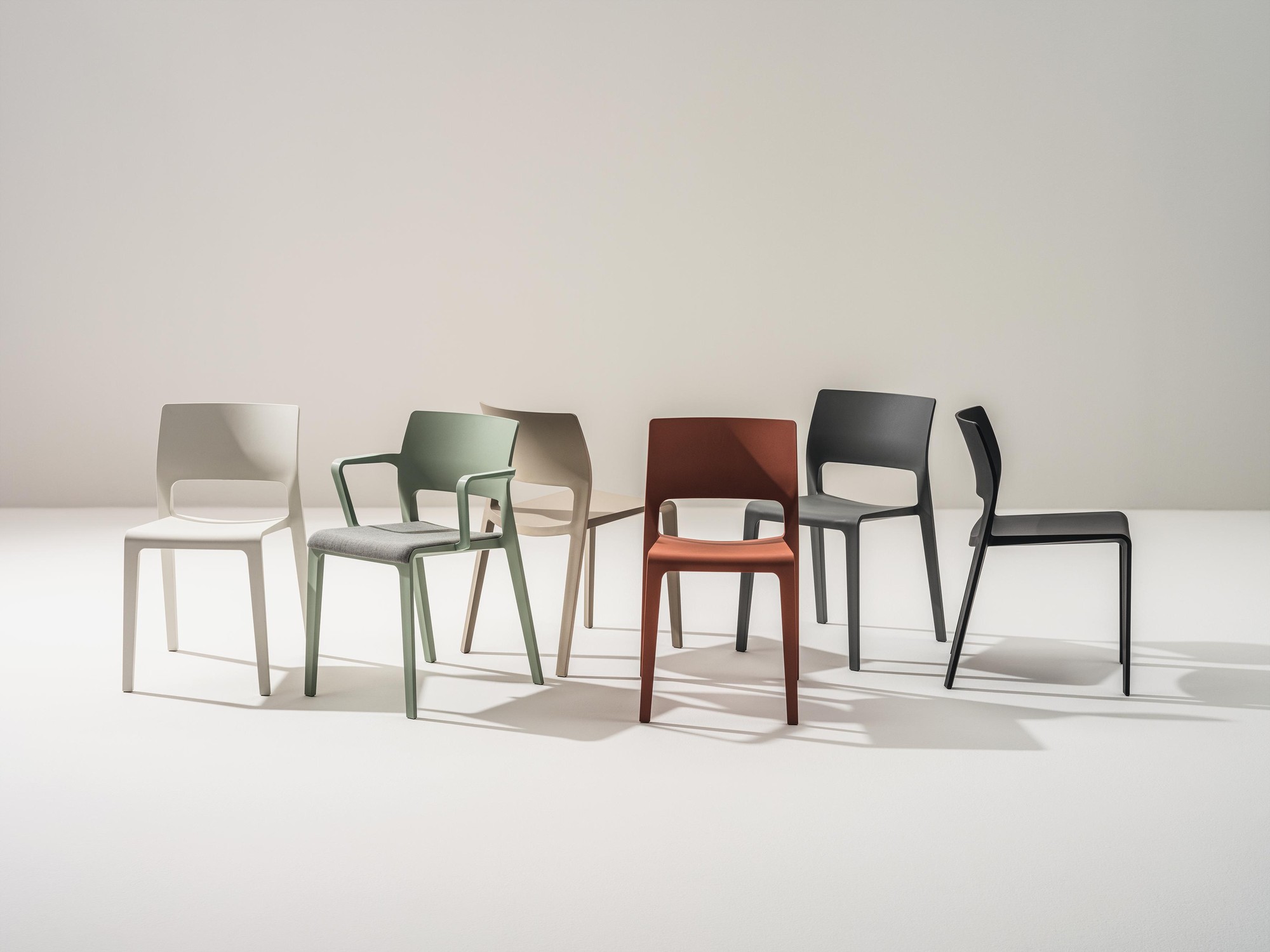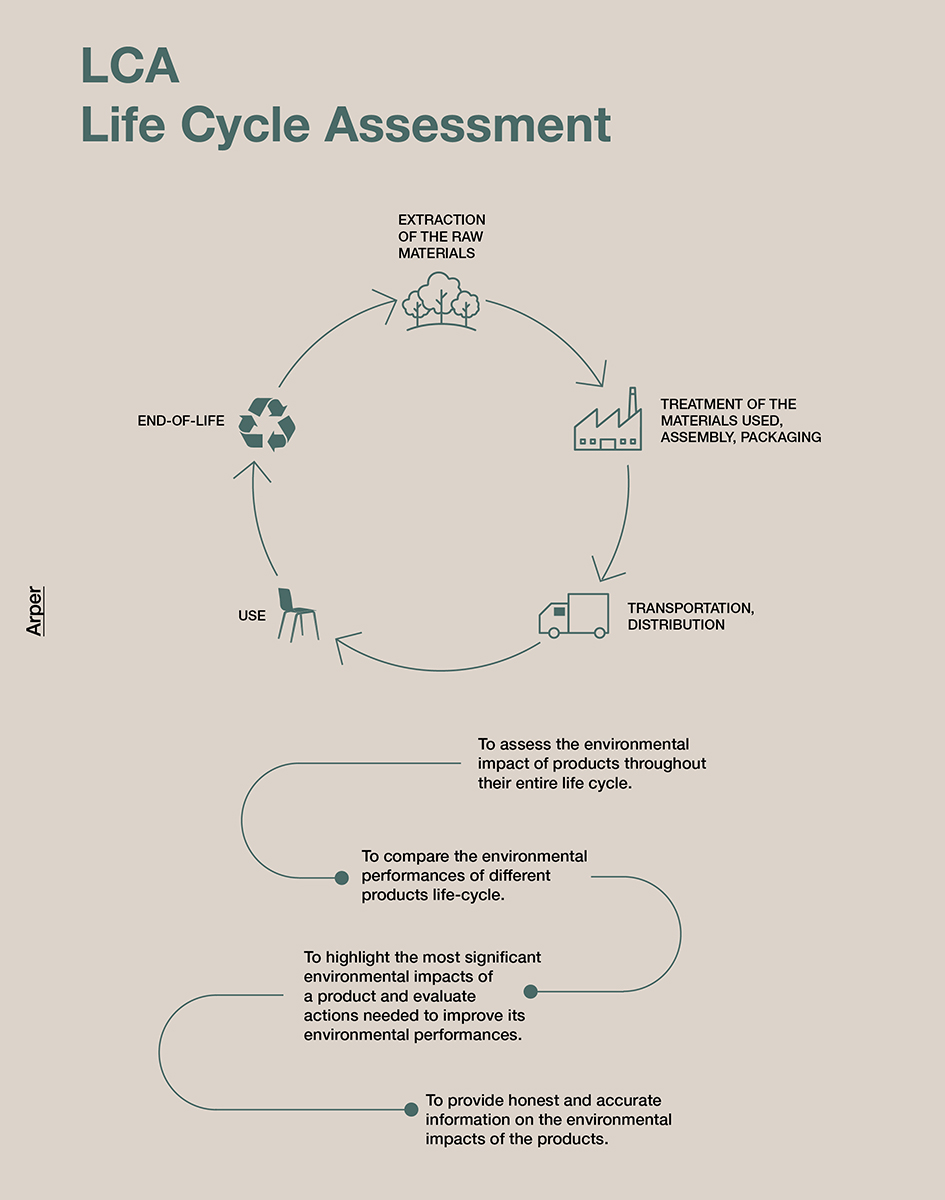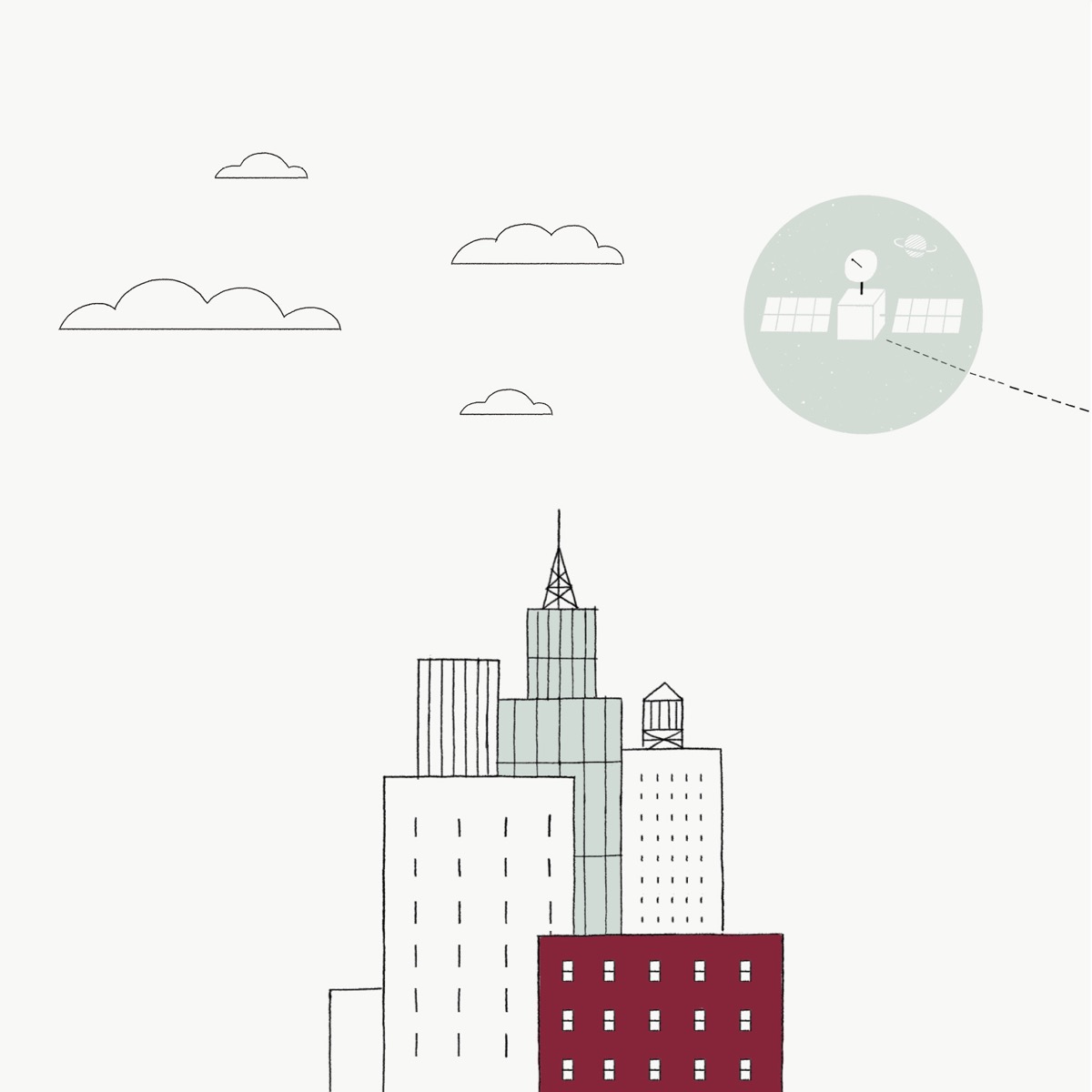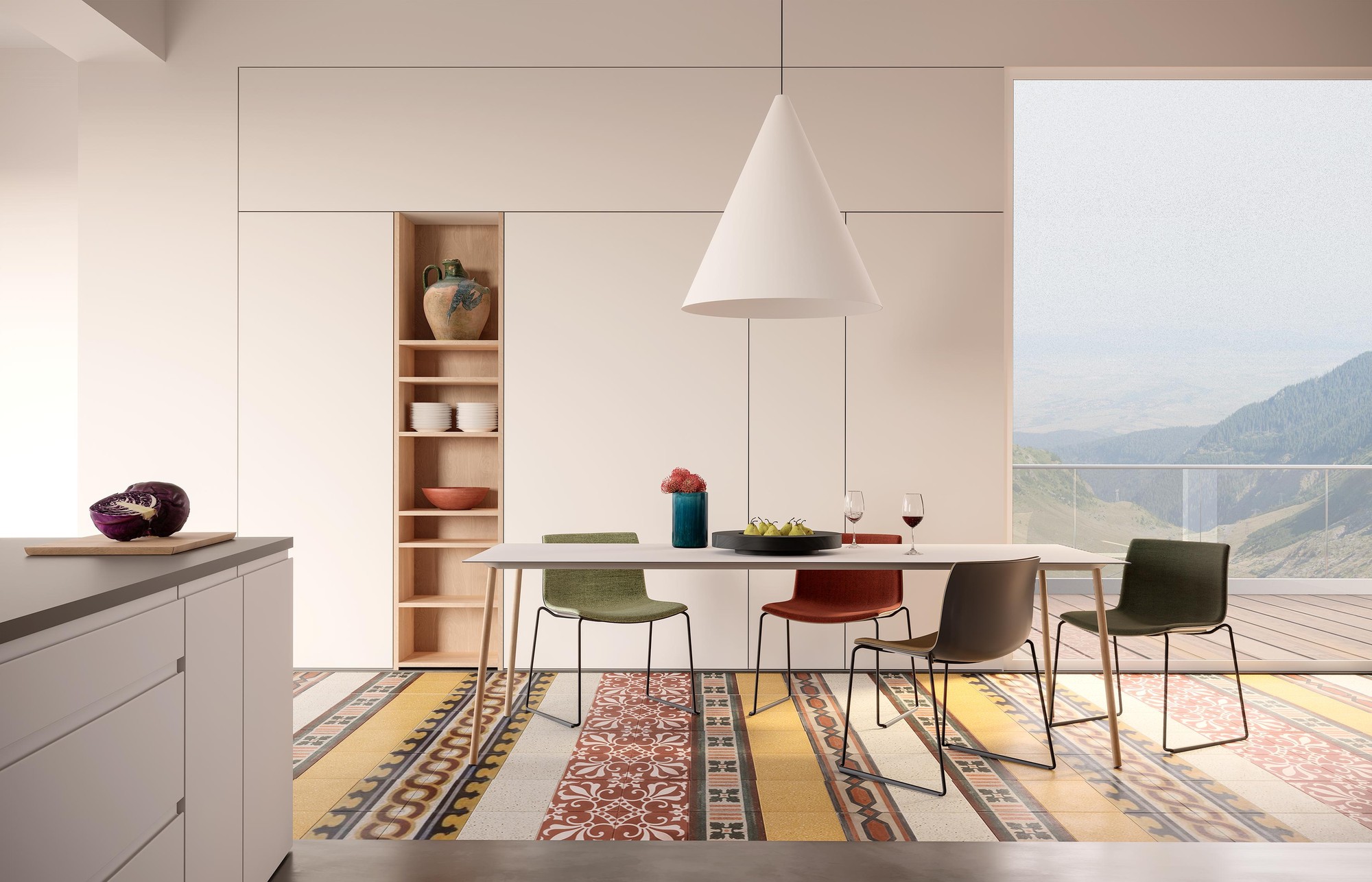
Certain analytical tools like LCA permit the creation of expertise and a strategic method that can become a competitive advantage. Arper’s pathway inside sustainability, narrated by Andrea Mulloni, Head of Sustainability, and Michela Possagno, Environment Expert inside Arper.
The self-evident crisis is teaching us that we do not need more products, but better ones. Products that are more sustainable and certified through tools of analysis and documentation that fully assess environmental impact. Products for which it is also possible to oversee correct disposal at the end of their life span, in keeping with circular processes. In today’s furniture industry the regulations are fragmented, but the market and the financial system reward companies that are capable, through production, of limiting critical impacts, making sustainability into a strategic long-term driver. Well before sustainability became an unavoidable theme, Arper created an in-house team of experts, currently helmed by Andrea Mulloni, Head of Sustainability, and Michela Possagno, Environment Expert.
“Achievement of more sustainable production,” says Mulloni, “implies the acquisition over time of a methodology and know-how inside the company, through applied research, cooperation with production partners, and continuing analysis and review of products to improve their environmental performance.” One of the tools of evaluation is LCA (Life Cycle Assessment), which based on PCR (Product Category Rules) makes it possible to gauge environmental impact of a product across all the phases of its entire life, from sourcing of raw materials to the phases of production, transport, use and disposal – namely decommissioning and reinsertion of a new product in another life cycle. LCA is useful to identify critical issues and to develop an environmental strategy. Thanks to these tools, it is possible to prepare a EPD® (Environmental Product Declaration), a verified and registered document that communicates transparent information on the life cycle and environmental impact of a product.


Arper and environmental strategy
Since 2006, Arper already began to apply tools like LCA to analyze the impact of a number of its furnishings. Far from the current demand for sustainability in supply chain management and transparency of corporate policies and strategies, the applied analysis was an individual, aware choice, and the result of major corporate investment. The company was certain that more conscious choices within the entire production process of furnishings would lead to a more strategic vision, and to competitive advantage today. “One innovative aspect, for those times,” Possagno points out, “was the application, already from the end of the 2000s, of analytical tools like LCA in the phases of product research and development, in such a way as to acquire not only ‘ex-ante’ knowledge on the environmental impact of the product itself, but also to intervene on the final results through objective data. LCA has guided, for example, the choice of materials and production processes, and it has led to the creation over time of various product standards, which recur in the latest collections, such as the presence of recycled materials, of glue-free assembly systems, water-based coatings or wood with FSC® certification (FSC-C148360).


LCA as a tool of product optimization
Multiple factors converge in the LCA of a chair. Each single component is analyzed for parameters such as weight and percentages of materials, manufacturing processes, the number of pieces produced per hour, the hardware utilized and the energy consumed by the machinery. Data are brought together on every supplier, percentages of scrap, packing and packaging, and on transport based on type (by sea, on roads, by rail, etc.), gauged in terms of forecasts of shipping qualities in the world. The values determined by the LCA analysis permit estimation of Co2 production, of the reduction of the ozone layer, eutrophication and acidification of water, or its degradation, and depletion of abiotic, non-renewable resources.
“Study of the LCA,” Mulloni continues, “is also interesting for products that are already in the catalogue, because it allows us to retroactively understand the most problematic aspects of their environmental impact, and how it is possible to intervene. For example, thanks to LCA analyses the impact of the Juno chair has been reduced, through the use of a post-industrial polypropylene in the chassis and the optimization of various production processes. The next step was to reduce the quantity of the material without putting the technical properties at risk.” Catifa 46 was the first product analyzed through LCA, in 2007. Over the years it has undergone a series of minor adjustments. It is more complicated to intervene on a product with such a clear identity, connected with technical patents, but the series of data supplied by LCA will make it possible, when an equally high-performance post-consumer polypropylene is available on the market, to take steps regarding the technology of the material. In general, the path of analysis enables identification of a series of critical aspects, whose constraints can be overcome thanks to the design of the products or the use of more advanced machinery, with less waste and running on renewable energy sources. Faced with legislation that is still in its early phases, and considering the fact that the average timing of product development is about two years, reasoning in terms of a correct and feasibly implemented principle like sustainability becomes a competitive advantage. “Therefore this is not an ‘imminent’ approach, but instead a strategic vision,” Possagno specifies.
Avoid, reduce, compensate. Sustainability as an all-around ethical choice.
Communication tends to emphasize the theme of di Co2 emissions such as acidification and eutrophication of water, have critical repercussions for the environment. And the emissions are not only Co2, but various harmful substances related to Co2 with an agreed conversion factor equal for all, in such a way as to simplify comprehension and comparison. Similarly, many companies attempt to “make peace” with their own environmental impact through activities of compensation. But to compensate in a different context or geographical area with respect to the zone of production of the emissions is not so consequential. “Compensation is a theme that is more political than realistic,” Possagno emphasizes. “And it should be the final phase of a process (Avoid, Reduce, Compensate) that prevents harmful substances and procedures, reduces emissions, and only compensates for them at the end of this path.”
“To avoid,” Possagno continues, “also means to abstain from presenting misleading information, to trace back to the source of materials, to examine processes in depth and to discard those that are not safe for ethical and environmental reasons. The approach to innovation and novelty in general has to be weighted, and cannot be simplistic. “To reduce” means to understand and therefore put limits on environmental impact, not simply for one product, but by estimating and calculating Arper’s emissions as a whole.” In practice, in order to take on value and contribute to the formulation of the company’s strategic objectives, the calculation of environmental impact has to include all the processes related to the company: “even the daily home-to-work movements of Arper personnel,” Mulloni explains. “To offer transparency, which is what the market requires most today. Not by chance, many companies in the furniture industry have spontaneously prepared Sustainability Reports. And Arper will soon be presenting one of its own.”





